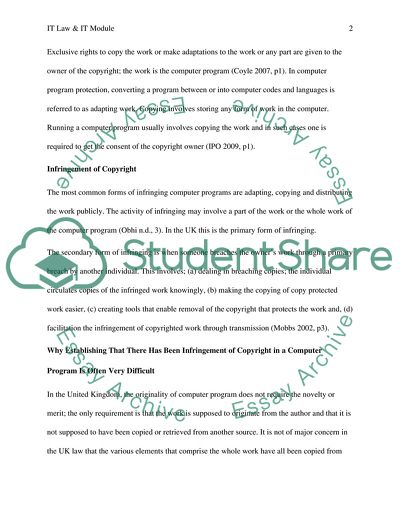Cite this document
(Copyright in a Computer Program Coursework Example | Topics and Well Written Essays - 1500 words, n.d.)
Copyright in a Computer Program Coursework Example | Topics and Well Written Essays - 1500 words. https://studentshare.org/information-technology/1748759-ip-law-it-module-ci320-coursework-assessment
Copyright in a Computer Program Coursework Example | Topics and Well Written Essays - 1500 words. https://studentshare.org/information-technology/1748759-ip-law-it-module-ci320-coursework-assessment
(Copyright in a Computer Program Coursework Example | Topics and Well Written Essays - 1500 Words)
Copyright in a Computer Program Coursework Example | Topics and Well Written Essays - 1500 Words. https://studentshare.org/information-technology/1748759-ip-law-it-module-ci320-coursework-assessment.
Copyright in a Computer Program Coursework Example | Topics and Well Written Essays - 1500 Words. https://studentshare.org/information-technology/1748759-ip-law-it-module-ci320-coursework-assessment.
“Copyright in a Computer Program Coursework Example | Topics and Well Written Essays - 1500 Words”. https://studentshare.org/information-technology/1748759-ip-law-it-module-ci320-coursework-assessment.


